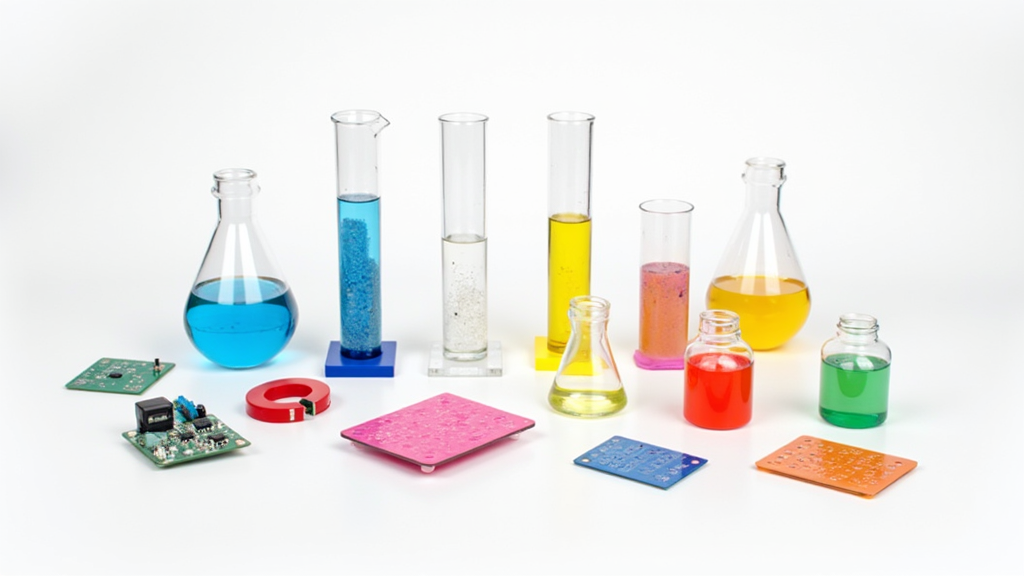Introduction
Science kits for homeschooling can transform an ordinary day at home into an exciting journey in which you stumble upon new ideas. These hands-on resources are more than just learning aids; they are a means to bring lessons to life, encouraging curiosity and building essential knowledge through interactive experiments. In many households, supplementing the regular curriculum with practical science experiments not only deepens understanding of core subjects but also sparks a genuine passion for learning. Whether you’re exploring biology, physics, chemistry, or environmental science, using science kits makes abstract concepts more tangible.
By mixing traditional lessons with these practical activities, parents and educators create an educational environment that is both engaging and memorable. In this article, we detail several ideas and recommended kits, while discussing how a thoughtfully planned experiment can enrich your homeschool routine and help lift up learners to take charge of their own educational discovery.
This post may contain affiliate links. When you click and purchase from any of our links, we may get a small commission at no extra cost to you. For more information, please see our affiliate disclosure.
Top Science Kits for Homeschooling: Hands-On Stumbling Upon New Ideas
Science kits have long been cherished for their ability to turn passive study into an active, in-the-moment experience. These kits typically include everything you need for experiments ranging from simple chemical reactions to demonstrations of physical and earth sciences. Clear, step-by-step instructions ensure that even beginners can follow along, witnessing concepts become clear right before their eyes.
By encouraging you to get involved rather than just reading from a textbook, these tools give students the opportunity to track down answers on their own. The excitement that builds through seeing theory transformed into practice is hard to match, and many families have noticed that when children are allowed to experiment, they quickly learn to ask questions and seek further knowledge.
Science Kits for Homeschooling: Bringing Experiments into Your Home
Home education thrives when books, discussions, and experiments work hand in hand. Science kits serve as versatile tools that allow educators and parents to supplement the curriculum with live experiments. Setting up a small experiment station—perhaps a table in the living room or a cleared space in the kitchen—allows for spontaneous yet structured study sessions where complex ideas are made simple. With a combination of physical materials and, at times, digital supports like interactive apps, these kits provide both a tactile and visual learning experience.
The immediate satisfaction of mixing chemicals to see a reaction or assembling a circuit that buzzes with energy reinforces lessons in a way that theoretical learning simply cannot replicate. This integration not only makes learning more dynamic but also brings science into daily life, turning the mundane into an opportunity to get involved with the subject matter.
Key Benefits and Practical Uses of Science Kits
One of the most significant benefits of using science kits in a homeschool setting is that they actively lift up learners by making them participants in the learning process. Instead of passively absorbing information, children get to experiment, observe, and even modify experiments as they see fit. This practical involvement deepens the retention of scientific concepts and allows learners to connect theoretical ideas with real-world applications.
In addition, science kits can be adjusted based on age and ability. Younger students might enjoy simple experiments that illustrate basic physical laws, while older ones can tackle more complex projects that require problem-solving and critical thinking. With a variety of kits available, educators can match activities to lesson plans, ensuring that every experiment offers a balanced mix of fun and educational value.
Interactive Science Experiments: Tools for Exploration
The interactive nature of many science kits makes them especially engaging. Some kits include digital components such as apps or online guides that allow students to record their progress and even simulate more advanced experiments. This blend of hardware and software creates a well-rounded learning experience that appeals to different learning styles.
Visual learners benefit from seeing the experiment in action, while kinesthetic learners thrive by physically assembling the kit and seeing firsthand how reactions occur. Furthermore, when children work as a team—whether with siblings or parents—they also develop collaboration skills, reinforcing that science is often a group effort. This aspect is crucial in a homeschool environment where learning can be tailored to include both independent and cooperative activities.
Choosing the Best Science Kits for Your Homeschool Routine
Selecting the right science kits for homeschooling depends greatly on your students’ interests and the subjects you wish to emphasize. Begin by considering which areas of science excite your child. Some children might have a fascination with chemical reactions, while others are more intrigued by physics or environmental studies. Once you’ve established these interests, look for kits that are well reviewed and that come with clear safety guidelines and easy-to-follow directions.
It is essential that the chosen kits match the learning level of the student to prevent frustration while still providing a gentle challenge. Quality matters too—a well-constructed kit with durable components can be used repeatedly over time, offering numerous opportunities to experiment and learn. Reading reviews from other homeschooling families can also help guide your decision, ensuring you choose materials that truly add a boost to your educational routine.
Popular Science Kits for Homeschoolers
Below are some science kits that have proven especially popular among homeschooling families:
- Crystal Growing Kits: These kits allow students to watch crystals form and develop, offering a visual and hands-on introduction to basic chemistry and geology.
- Circuit Building Kits: Designed to teach fundamental electronic and circuitry principles, these kits typically include snap-together parts that light up and move, making the concepts clear and exciting.
- Plant Biology Sets: Perfect for budding botanists, these kits provide all the materials needed to start a small indoor garden or to observe the growth cycle of plants, linking theory with everyday experiences.
- Geology Bundles: With rock samples, minerals, and simple excavation tools, these sets offer a tangible experience of earth science and the study of natural formations.
- Weather Experiment Kits: Enabling students to build basic meteorological devices, these kits help track rainfall, temperature, and wind, offering insights into the science behind weather patterns.
- Robotics and Coding Kits: For those interested in technology, these kits merge basic programming with electronics, guiding students through the construction of simple robots.
Planning and Preparation for Science Experiments
Integrating science kits into your homeschool schedule requires a modicum of planning, but the rewards are well worth the extra effort. Start by reviewing your current curriculum and identifying topics where a hands-on experiment can illustrate theoretical concepts. Many science kits come with guides that align with school standards, making it easier to slot the experiment into your lesson plan. Preparation involves not only gathering all the necessary materials ahead of time but also ensuring that safety guidelines are clearly understood.
Setting up a designated area for experiments—be it a small corner of your kitchen or a dedicated table—helps create a routine where science becomes a regular part of the learning process. Such planning minimizes distractions and makes it easier for students to get involved right from the start. In addition, allowing time for cleanup and reflection after the experiment ensures that each session is both practical and appreciated as a complete learning experience.
Building a Simple Home Science Lab
Creating a dedicated space for science experiments can further elevate the learning experience. This need not be an elaborate laboratory; even a modest table with basic supplies can suffice. By setting aside a small area as a ‘science lab,’ you signal to your children that experimentation is an important part of their education. In this space, you can store your kits, keep essential tools like measuring devices and safety gear, and even maintain a journal where observations and outcomes are recorded.
Over time, the journal becomes a valuable record of experiments and growth, providing both a reference and a cherished keepsake of the child’s scientific journey. This organized environment makes it easier to revisit past experiments and consider what worked or what could be adjusted, fostering an attitude of continuous improvement and curiosity.
Final Thoughts
Science kits for homeschooling offer an excellent way to blend theoretical learning with practical application. They allow students to break away from the confines of textbooks and get involved in experiments that spark curiosity and build problem-solving skills. The tactile experience of manipulating materials, recording results, and reflecting on outcomes makes science both accessible and exciting. When students see a chemical reaction come to life, or watch a circuit complete its loop, they not only learn scientific principles—they also develop the confidence to ask questions and seek additional information on their own.
In a homeschool setting, flexibility is key. Incorporating science kits into your routine provides an adaptable and engaging method to supplement a standard curriculum. It is important to remember that not every experiment will go perfectly, and that is part of the learning process. When things don’t work as planned, they offer valuable lessons in troubleshooting and perseverance. Ultimately, these experiences help build a robust foundation for lifelong learning. The journey from curiosity to understanding is made smoother with hands-on exploration and structured guidance, ensuring that every experiment leaves a lasting impression.
Bottom line: by choosing quality science kits and planning deliberate experiments, you can create an educational environment where every day offers a new opportunity to learn, grow, and get involved with real scientific inquiry.
Additional Resources
- Article: Best Printer For Your Homeschool Needs: A Smart Choice
- Resources: Science Kits Sold on Amazon
When you click and purchase from any of our links, we may get a small commission at no extra cost to you. For more information, please see our affiliate disclosure.

